Popular games for collection Game & Watch
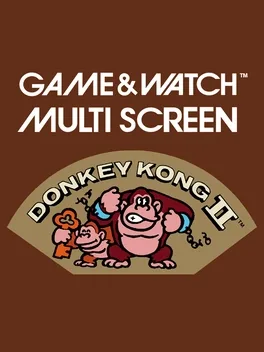
Donkey Kong II was developed by Nintendo R&D1 and released as part of the Game & Watch Multi Screen series, featuring two LCD screens. It was released in 1983. Donkey Kong Jr. has to touch a key, then it moves up to the top screen. Donkey Kong Jr. has to climb to the top screen while avoiding things such as electrical wires. When he gets to the top screen, Donkey Kong Jr. will have to touch the key again, and it will move to the keyhole of one of the chains. Donkey Kong Jr has to climb up the rope below the keyhole, while avoiding birds. When he gets to the top of the rope, one of the chains will unlock. He has to do this 4 times until he saves Donkey Kong. After that, the game will start over, at a somewhat faster pace.
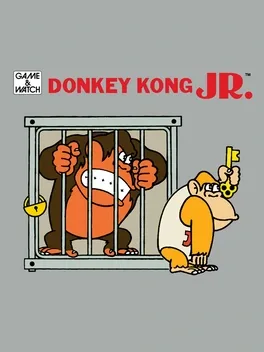
The first Game & Watch version of Donkey Kong Jr. is the first game in the New Wide Screen series. It is a single-screen single-player game.
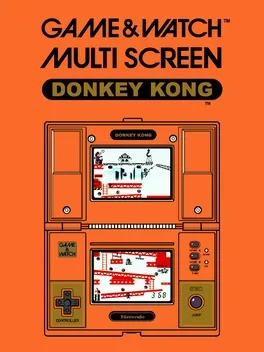
Donkey Kong is a Multi Screen Game & Watch game released in 1982. It was based on the arcade game Donkey Kong, with gameplay based only on 25m, the first stage from the arcade version. This was the first Game and Watch game to be based on pre-existing Nintendo characters, and it was the first video game system to include the D-pad, a feature of all future Nintendo systems. The game unit's model is DK-52, with the DK standing for Donkey Kong. The game was a huge success, selling over 1,000,000 copies worldwide.
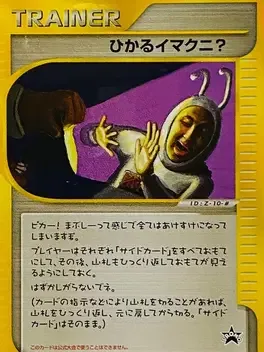
Imakuni? no Ball is a port of the Game & Watch title 'Ball' with Imakuni?, an infamously goofy and eccentric Creatures Inc. staffer, as the starring role. This game is notable for being one of two scannable extras supplied on the Shining Imakuni? promotional card, the other being a biography on Imakuni? and various fun facts about him. The card is scannable via the Japanese e-Reader+ peripheral for the GameBoy Advance. It was given out with member registrations to the Pokémon Fan Club starting January of 2002 alongside a commemorative sleeve.

Bowser is dropping oil into a castle, and Mario must use two buckets to catch the oil before it touches the floor. Yoshi serves to dispense oil and can even be used to take out Bowser from the top of the castle, gaining bonus points in the process. In Classic Mode, the Station Helper must collect oil dripping from the ceiling of a gas station in one bucket and dump it to his boss before the bucket overflows.
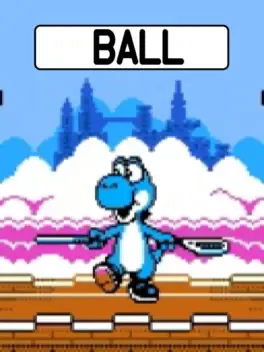
Remake of Game & Watch Ball released as unlockable in Game & Watch Gallery 2. The player must control a Yoshi, Mario, Wario, or King Koopa as they juggle various objects. In Classic Mode, the player needs to juggle balls as long as they can.
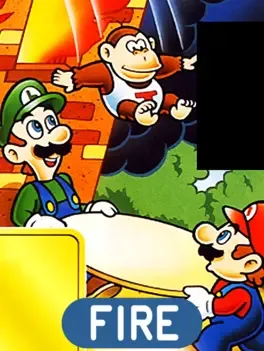
Mario and Luigi attempt to catch Toads, Yoshis, and Donkey Kong Jrs. after they jump out the window of Princess Peach's burning castle. The catch is that different characters fall at different speeds: Toads bounce the highest, while Donkey Kong Jrs. bounce the lowest. Yoshi Eggs also appear and contain either a Bob-omb or a Moon (a Super Star in the first game); the eggs break open when they are caught or hit the ground. The player receives two points for catching an egg. If a Bob-omb reaches the carriage, everyone, including the Mario Bros., runs away as the carriage explodes, and the player gets a miss. If the Mario Bros. catch a Moon, the player receives five points. At 200, 500, and 700 points, Peach appears and blows a kiss, sending out a heart for Mario or Luigi to catch to remove a miss. Music is also featured in this version, with the tempo changing depending on the speed of the game.
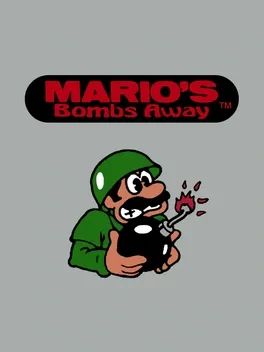
Mario's Bombs Away is a game for the Game & Watch. It was one of the six games made for the Panorama line. The game involves Mario, a soldier in this game, on a mission to receive a bomb from his buddy on the left side of the screen and carry it to his troop on the other side. The enemy is waiting in the trees in his path, so he must keep his bomb away from their torches.
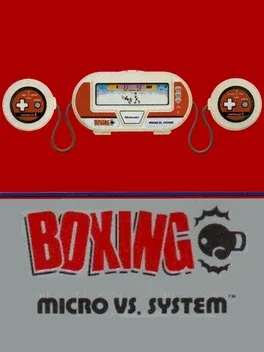
Boxing is a Micro VS. Game & Watch game released in 1984 by Nintendo. In America, the game was originally known as Punch-Out!! (named after the popular franchise), though when the game was included in Game & Watch Gallery 4 they changed the name back to Boxing. The model number for the game was BX-301. Within the box of the game were the unit, LR44 batteries, and a caution leaflet. In the game, you'll box another character. The game is seen from a 2D perspective, and your character is always on the right. The only difference between Boxing and Punch-Out!! were the names and the box. The American box had artwork that was made specifically for it.
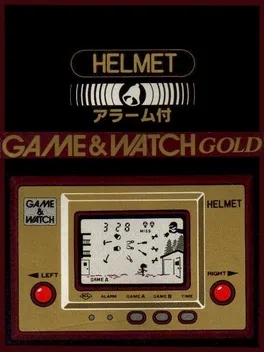
Helmet is a Game & Watch game that was released in 1981. In the game, you have to run from one house to the house across from it without getting hit by falling tools that your enemies is throwing at you. Sometimes the door on the other house will close, making you run around until it opens.

Mario and Luigi attempt to catch Toads, Yoshis, and Donkey Kong Jrs. after they jump out the window of Princess Peach's burning castle. The catch is that different characters fall at different speeds: Toads bounce the highest, while Donkey Kong Jrs. bounce the lowest. Yoshi Eggs also appear and contain either a Bob-omb or a Moon (a Super Star in the first game); the eggs break open when they are caught or hit the ground. The player receives two points for catching an egg. If a Bob-omb reaches the carriage, everyone, including the Mario Bros., runs away as the carriage explodes, and the player gets a miss. If the Mario Bros. catch a Moon, the player receives five points. At 200, 500, and 700 points, Peach appears and blows a kiss, sending out a heart for Mario or Luigi to catch to remove a miss. Music is also featured in this version, with the tempo changing depending on the speed of the game. In the Game & Watch Gallery 4 version, the time of day changes every 200 points collected. If the player selects this game in Game & Watch Gallery 4 yet does not start playing it, a humorous sequence plays. In particular, Mario and Luigi catch a Toad sent flying to the left and a Yoshi sent flying to the right, only to narrowly stop when discovering their next "rescue" was in fact a Bob-omb, which detonates inches from them, and are then forced to flee as a dozen Bob-ombs are raining from the sky.

The gameplay in this version is largely the same, but the graphics are updated, and the divers are replaced by Mario down below and Princess Peach in the boat. In this version, Mario earns twice as many points for every piece of treasure he brings to Peach. However, Mario gets slower as he grabs more treasure. To counter this, he can throw all of his treasure, which lightens his load and can stun one of the Octopus's arms for a brief time. Sometimes the Octopus squirts clouds of black ink, and if one hits Mario, he receives a miss. When Mario amasses 200, 500, and 700 points, a Lakitu appears and drops a heart for him to remove a miss. The Modern version also features music, with the tempo changing depending on the speed of the game. In Game & Watch Gallery 4, the Octopus changes color each time the player gets 200 points. In Game & Watch Gallery 4, if the player selects the game yet does not actually start it, a humorous sequence is shown. Mario arrives with a bag of loot in one hand and a Game Boy Advance in another. However, he ends up surrounded by four octopus arms (two on each side) that are menacing him. Trapped, he then calls on a Lakitu to help him. He then grabs the fishing pole of the Lakitu and, trying to hold on, is ultimately forced to drop his belongings, with a crown and gold objects falling out of the loot bag. Finally, each octopus arm retrieves a treasure, including the loot bag itself as well as the GBA.
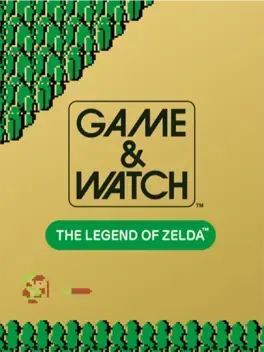
With a retro look, legendary flourishes, and the power to save Hyrule, the Game & Watch: The Legend of Zelda system is a jam-packed tribute to 35 years of the Legend of Zelda series. Adventure through three iconic classics and enjoy all-new old-school fun with this stylish handheld system.

Snoopy is a Tabletop and Panorama Game & Watch video game released in June of 1983 by Nintendo. The game's model number was SM-73 and SM-91 for the Tabletop and Panorama version, respectively. It is unknown how many units the Tabletop version sold, though Nintendo manufactured an estimated 250,000 versions of the Panorama game. The contents within the Panorama game included the unit, LR44 batteries, a caution leaflet, and battery stickers. CGL and Futuretronics versions of the game were also released. In both games, you're required to hit the musical notes when they arrive in the appropriate position.

Nintendo 3DS Sound: Soccer is an easter egg game built into the Nintendo 3DS Sound application.

The Modern version of the game has Mario working in a cookie factory. Yoshi and Toad are featured instead of the drivers, with Yoshi eating the Yoshi Cookies made on the left conveyor belt and Toad packaging the Yoshi Cookies made on the right conveyor belt. Boos also occasionally appear, taking up cookie dough slots on the second floor. Unlike in Classic Mode, however, Mario is allowed to fall down onto an elevator platform, but touching the very bottom or top still earns the player a miss. When Mario amasses 200, 500, and 700 points, a heart appears for him to remove a miss. Music is also featured in this version, with the tempo changing depending on the speed of the game.
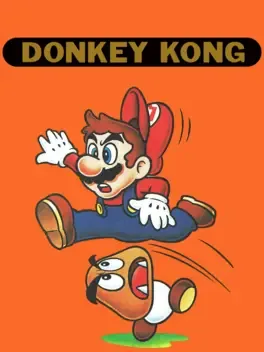
A remake of the Game & Watch version, in which Peach substitutes for Pauline.
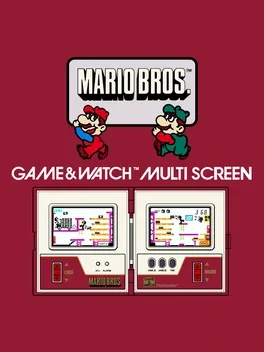
Mario Bros. is a title for the Game & Watch. Despite its name, it has no similarity to the arcade game Mario Bros. Instead of plumbing, Mario and Luigi are working at a bottling factory and must prepare packages of bottles to load onto a delivery truck. This game, played on the Multi Screen model of the Game & Watch, a few months before the much more popular arcade title, making it the first game to feature Luigi.
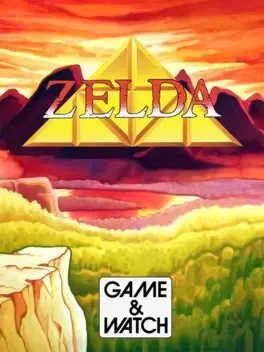
Zelda is a multiscreen Game & Watch game that was only released in English as a stand-alone system pre-loaded with the single game. It has dual screens which fold in a clamshell design, similar to the Nintendo DS. It was re-released as part of the Nintendo Mini Classics line in 1998 and 2007. The complete game can also be unlocked in Game & Watch Gallery 4 for the Game Boy Advance and Wii U Virtual Console. Its core formula is based on that of the original The Legend of Zelda, where Link must fight through eight dungeons and obtain the eight shards of the Triforce of Wisdom. However, it bears more gameplay similarities to The Adventure of Link, since it is 2D and from a side-on perspective. The game features an original, though minimal storyline.
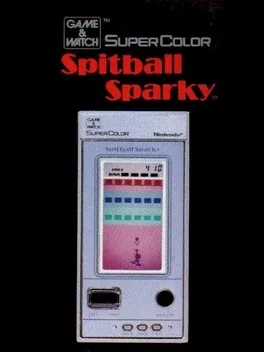
Spitball Sparky is a Super Color Game & Watch game released in 1984 by Nintendo. The game's model number was BU-201, and the contents within the box included the game, LR44 batteries, a caution leaflet, a how to play leaflet, and battery stickers. The game is very similar to the arcade classic Arcanoid and has colors due to the layers of colored plastic overlay. Your goal is to spit on the ball so that it'll go back up and destroy the blocks at the top. The unit was rectangular and silver. When Nintendo of America released the game in America, they made artwork for the game that had a more detailed character.

Safebuster is a multi-screen Game & Watch game released in January of 1988. The game was never released in Japan. The game's model number was JB-63. Worldwide Nintendo manufactured an estimated 500,000 Safebuster models. A pocket size version of Safebuster was also released in America and Europe. Safebuster also appears as an unlockable museum game in Game & Watch Gallery 4, albeit in Classic version only. In this game, the player controls a man who must catch bombs. By pressing the left or right buttons, you can move the man in the direction of the pressed button. After catching them, he must move to the edges of the screen to dispose the bombs. However, he can only hold up to three bombs. If a fourth one is caught, it will explode instead, as if a bomb was missed.
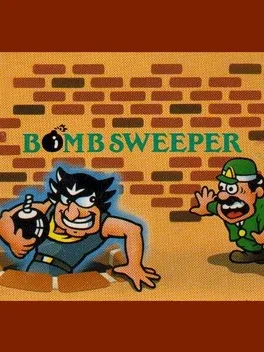
Bombsweeper was a multi-screen Game & Watch video game released in June of 1987. The game was never released in Japan. The game's model number was BD-62. Using the D-pad to move John Solver, you must reach at least one of the bombs hidden in the walls to clear the screen and receive a bonus for the time remaining. The only obstacles in your path are the walls, which you must either maneuver around or push them along provided there is no obstruction in the way. Some levels are a test of speed, others are a test of logic and intelligence.
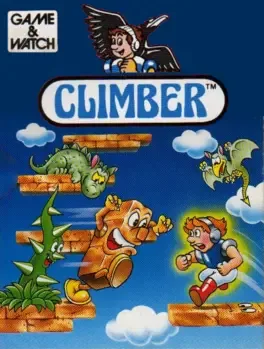
Climber is a Game & Watch video game released in the Crystal Screen format in 1986 and the New Wide Screen format in 1988. The game was never released in Japan, and an estimated 250,000 of the New Wide Screen version were produced by Nintendo. The model number for the Crystal Screen version is DR-802, while the model number for the New Wide Screen game is DR-106. Some speculate that the game is based on the Ice Climber NES game, though this is unconfirmed. In Climber, you are a child known as Climber who, with the help of Lord Meiji's teachings, jumps across platforms trying to get to the top of Block Mountain while avoiding enemies and platforms that move. The enemies are the Blockmen, which walk and turn into block platforms when they reach a gap; Eyerom, birds that fly and get in the Climber's way; and thorny plants, which are obstacles in the way of Climber's movements. In each set of 5 levels, the first 4 ends with a bonus game where Climber has 2 chances to time his jump to catch Hentori, the bonus bird. On the fifth level, Climber must jump and grab the sword at the correct time to stab and defeat Dragalo the dragon.
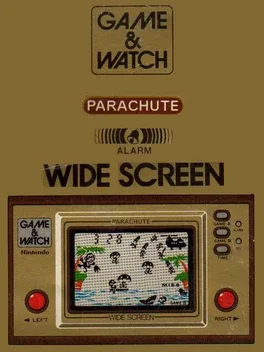
Parachute is a game for the Game & Watch where you have to save people from a helicopter and make them land in your boat. You will direct your boat under the person try and let them land safely. If they land in the water, a shark will come and eat them- if this happens three times you will lose and will have to start over.